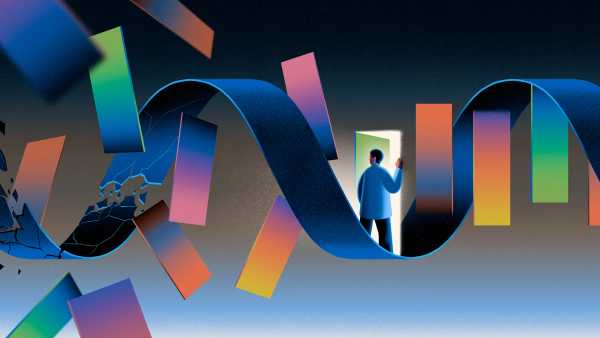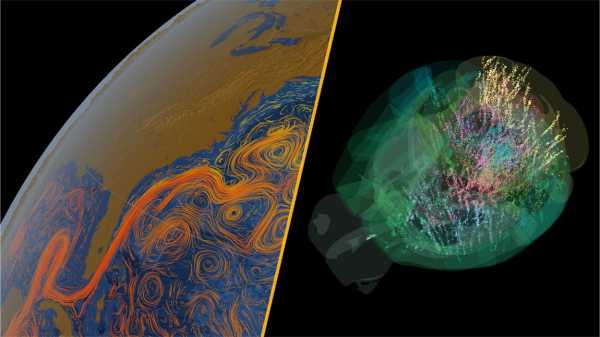
In this week's Science Spotlight, we discuss alarming predictions about a major Atlantic current, the breakup of the planet's largest iceberg, breakthrough discoveries in the study of mammalian brains, and the James Webb Space Telescope's search for extraterrestrial life. (Image: NASA/Goddard Space Flight Center Scientific Visualization Studio/Dan Birman, International Brain Laboratory.) Jump to:
Water-related topics dominated the scientific press this week, with particular attention focused on the prediction of a possible irreversible weakening of the Atlantic Meridional Overturning Circulation (AMOC), including the Gulf Stream, that could begin in the next few decades.
The findings are based on a groundbreaking study that combined data from 25 climate models. Under a moderate emissions scenario, the current is projected to weaken by the 2060s. Given the AMOC’s critical role in climate regulation, the scientists described the work as a “worrying climate signal.”
Other signs of global warming have been observed near South Georgia Island, where the giant iceberg A23a is undergoing active destruction. Meanwhile, a large hydrothermal system has been discovered in the depths of the Pacific Ocean, potentially holding clues to the origin of life on Earth.
You may like
-
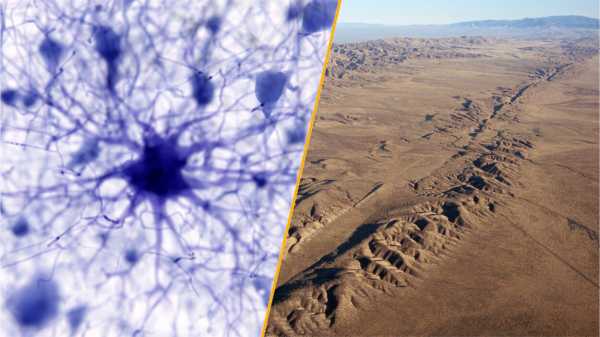
Science News: Delayed Seismic Events and Brain Astrocytes
-
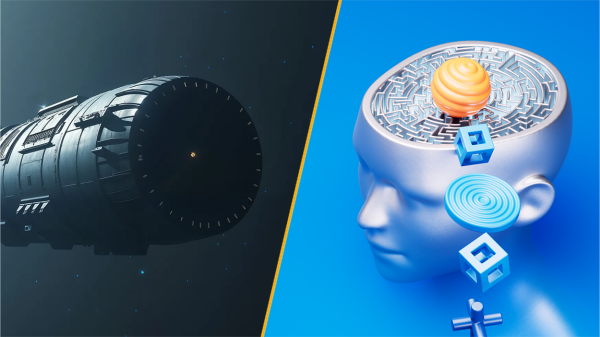
Interstellar Missions and the Ethical Challenges of Artificial Intelligence
-
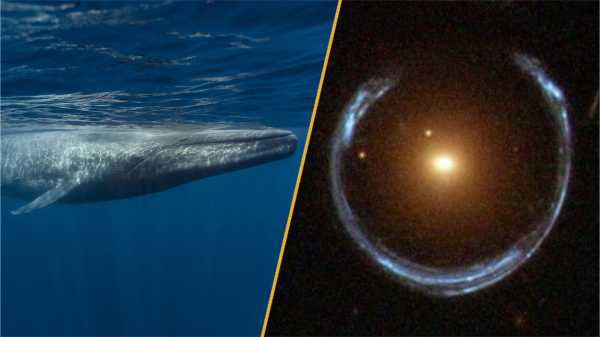
Astrophysical discoveries: black holes and the vocal abilities of whales
Mouse brain scan rewrites textbook: 600,000-cell neural map changes understanding of decision-making mechanisms
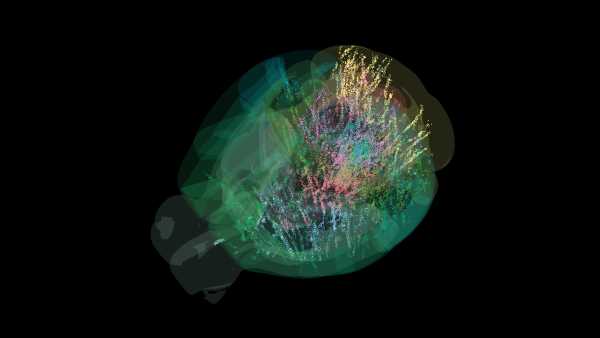
A unique neural map has shown that decision-making involves the coordinated activity of multiple brain structures.
Rarely does research challenge established scientific paradigms. But a massive neuroscientist project that analyzed 95 percent of rodent brains (over 600,000 cells) could be just such a breakthrough.
Scientists hope that this data will help to determine the areas of responsibility of different parts of the mammalian brain. Previously, it was assumed that neural activity follows a linear pattern: from sensory perception to abstract thinking with the inclusion of memory areas.
However, experiments have revealed an earlier start of decision formation and the involvement of a significantly larger number of structures. So far, only a correlation has been established, so the next stage of research is aimed at identifying cause-and-effect relationships.
Other medical news
— An unusual diagnosis: intense pain in the knee turned out to be a consequence of the presence of gold particles in the joints.
— Ancient retroviruses make up 40% of the human genome and can provoke neurodegeneration.
— The mechanism of formation of a lifelong reserve of eggs in primates has been solved.
Little secrets of lifeWhich animal has the best hearing?
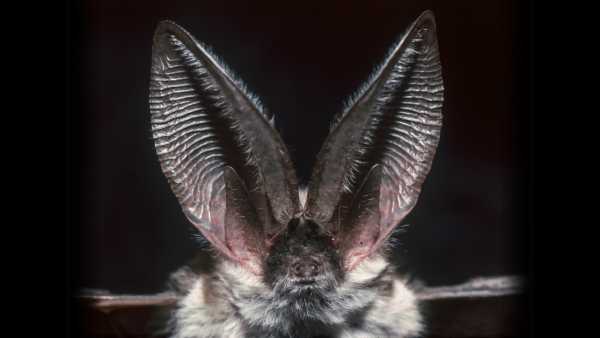
Some animal species have hearing abilities that surpass human perception.
Although bats are often associated with exceptional hearing, their prey, the greater wax moth, has evolved unique adaptations to detect the ultrasonic signals of predators. However, the definition of “best hearing” depends on the ecological niches and evolutionary goals of each species.
— Subscribe to the newsletter “Little Secrets of Life” to learn more amazing facts.
Chatbot suicide prevention concerns: Experts sound alarm over risky suicide advice from AI assistants

Popular AI platforms exhibit disturbing patterns of behavior when discussing suicide topics.
A study of three leading AI assistants (ChatGPT, Gemini, Claude) found that their responses to questions about suicide were unpredictable, potentially increasing risks for users. These findings coincided with a lawsuit filed by the parents of a teenager who committed suicide after interacting with a chatbot.
Experiments showed that ChatGPT provided direct answers to dangerous queries 78% of the time. An independent review by Live Science confirmed these findings, highlighting the need for regulation of AI technologies in the mental health field.
Tech news
— Scientists have identified 32 potential scenarios for AI to get out of control.
— Tasks that people can solve in seconds remain inaccessible to artificial intelligence.
— A robotic dog with AI has mastered the game of badminton against a human.
Also in science news this week
— A 1.8 million year old jawbone, possibly belonging to Homo erectus, has been discovered in Georgia.
— Mysterious structures in the Martian crust may be relics of protoplanets.
— Racial anthropology in Victorian science: a historical investigation.
— An asteroid the size of a bus will make a close flyby of Earth.
Spotlight on Science: Webb Telescope Brings Humanity Closer to Finding Extraterrestrial Life
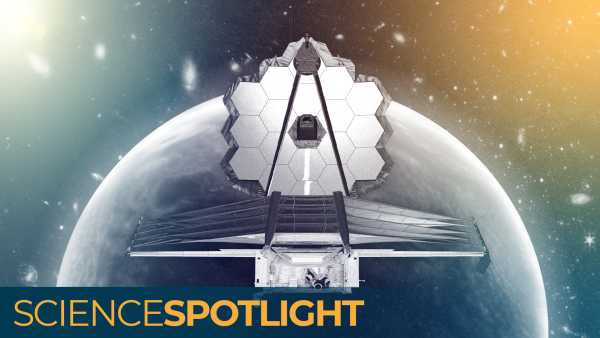
Astronomical studies of the exoplanet K2-18b yield conflicting results.
A $10 billion space observatory continues to collect data on potentially habitable worlds. Using the planet K2-18b as an example, scientists argue about the nature of the gases detected: are they biosignatures or the result of abiotic processes? The only consensus is the planet’s specific “aroma,” reminiscent of fermented cabbage.
Something for the weekend
A selection of materials for intellectual leisure:
— Live Science Crossword #8: Absolute Zero [Crossword]
— Should AI development be limited? [Poll]
— Where to watch the Blood Moon lunar eclipse? [Astronomy guide]
Science in Pictures: A Historic Photo of Earth from Lunar Orbit – 59 Years Later.
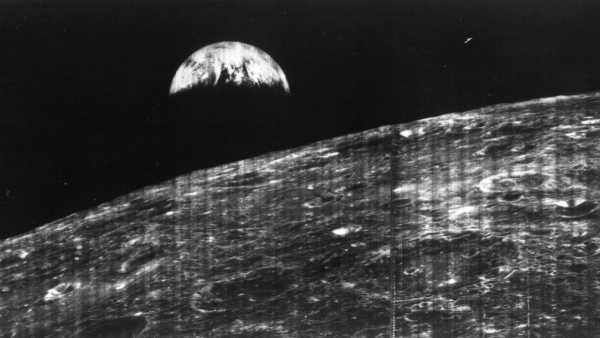
This image, taken by Lunar Orbiter 1 in 1966, was the first image of our planet from a lunar perspective.
Despite the technical limitations of the era, the photograph captured the Earth as a fragile blue orb suspended in the void of space. Ironically, this iconic image was taken during a calibration survey, not a planned mission.
Follow Live Science on social media
Get the latest science news via WhatsApp, Facebook, X (former Twitter), Flipboard, Instagram, TikTok, Bluesky and LinkedIn.
TOPICS Science News This Week

Ben Turner, Social Links, Navigation, Acting News Editor
British journalist and editor of Live Science. Specializes in physics, astronomy and climate change. Graduated from University College London with a degree in particle physics. In his spare time, he enjoys literature, music and chess.
You must verify your public display name before commenting.
Please log in again to enter your name.
Exit Read more

Scientific Reviews: Delayed Effect Earthquakes and Neuroglia
Sourse: www.livescience.com





